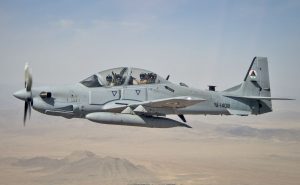How do you break into the warplane export market? At the International Institute for Strategic Studies’ Military Balance blog, Haena Jo and Tom Waldwyn lend some insight into how both Brazil and South Korea have struck gold in the global aerospace export market, the latter with the T-50 jet trainer and the former with the Super Tucano trainer and light attack aircraft. Jo and Waldwyn contrast Brazil and South Korea’s success on the aerospace export market, while also pointing out some of the similarities that the two countries shared. The story holds some lessons for how other countries might move down the same path.
Both Brazil and South Korea supported the development of their aerospace industries by ordering significant numbers of aircraft domestically. This both gave the industries in question a friend in government and guaranteed them the capital necessary to push forward with innovative designs. They diverged in government involvement, with the South Korean government pushing for the development of the T-50, and the Brazilian government taking a more hands off approach to the Super Tucano until the design matured.
Both Brazil and South Korea also adopted models of technology acquisition that enabled them to gain access to key foreign innovations. In the South Korean case, KAI worked directly with Lockheed Martin in order to develop the T-50 and included Israeli electronics in its combat systems. Similarly, Brazil partnered early on with Northrop and uses a Canadian engine, Israeli avionics, and weapon systems from a variety of countries to fill out the capabilities of the Super Tucano. Working with foreign partners can limit the potential range of exports (the United States has vetoed some sales of the T-50 based on export control rules) but it helps ensure the quality of the product.
Brazil and South Korea found different paths to success, but those paths suggest how other countries might try to enhance their competitiveness in the future. First, industry needs access to a basic level of technical know how, although this will vary depending on the aircraft envisioned. Second, industry requires state support through the prospect of domestic purchases. Third, industry must be open to technology acquisition from foreign sources (and foreign sources must be amenable to technology transfer). It doesn’t hurt to maintain a robust system of trade relationships and alliances that can smooth the rough edges of any transactions; the friendship of the United States is particularly helpful. Finally, the development of an aviation export industry requires time and patience.

































